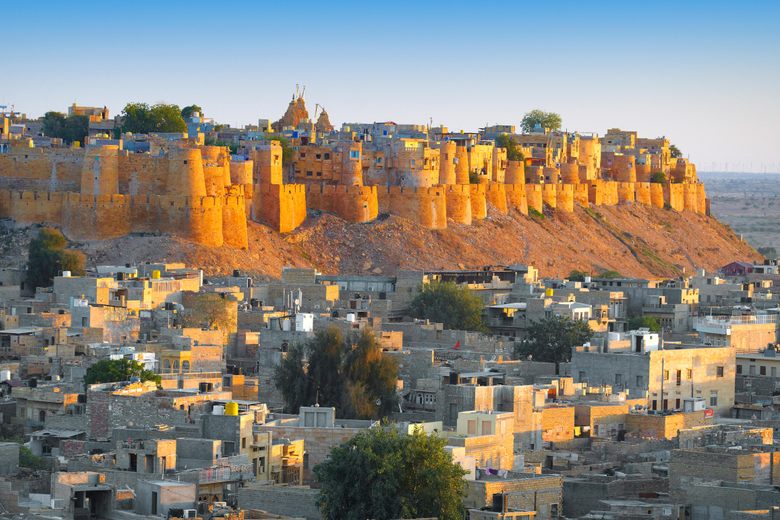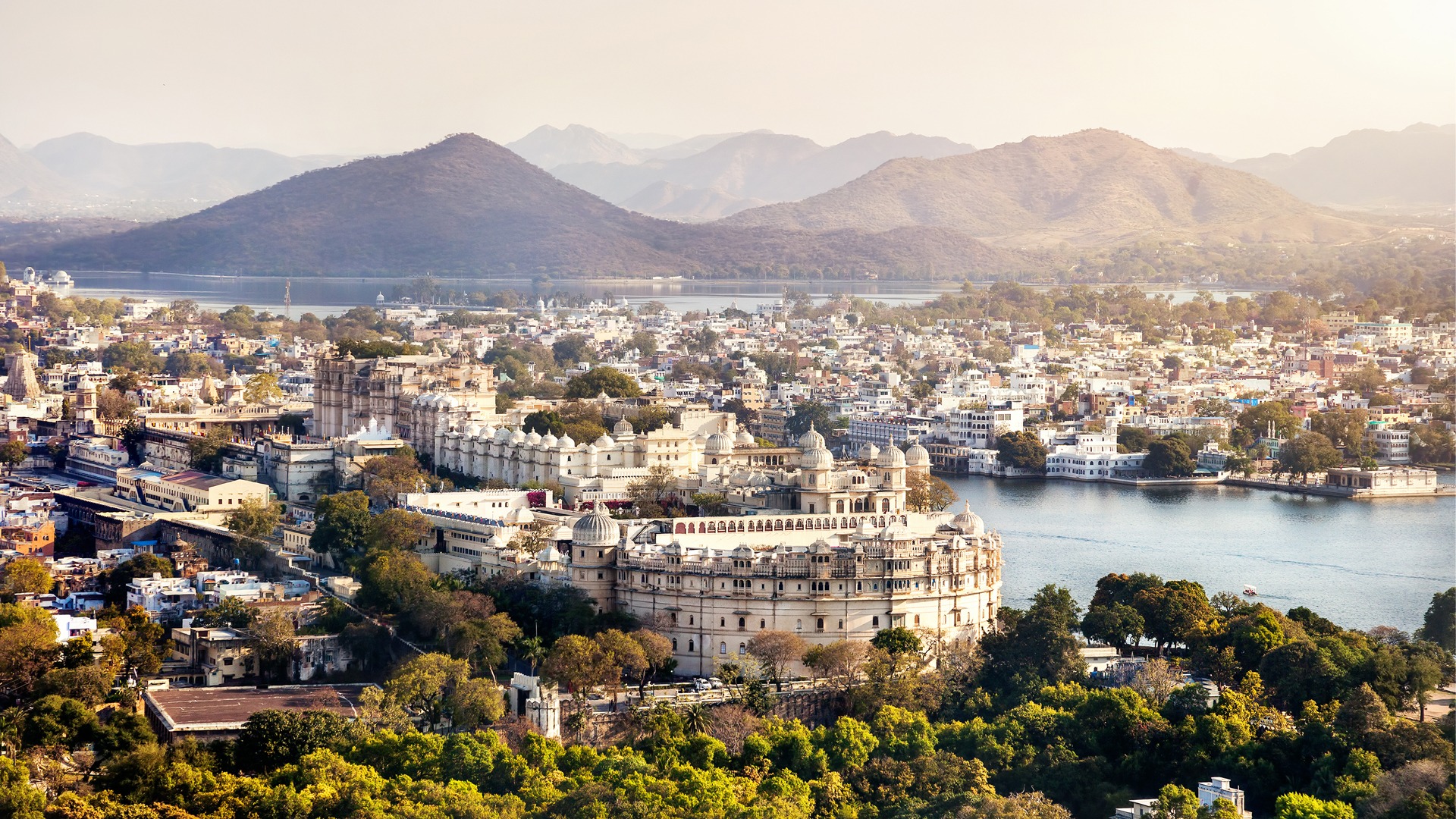Introduction
Its imposing structure, crafted from the yellow sandstone that glows under the sun, captures the essence of the desert and the tales of a bygone era. Jaisalmer Fort, as we explore its corridors and ramparts, we are transported back to a time when this fort was a bastion of power and prosperity, offering a glimpse into the lives of those who walked its halls centuries ago. This fort, a masterpiece of Rajputana architecture, embodies the spirit of resilience and artistry, making it an invaluable piece of India’s cultural heritage. Its walls, carved from golden-yellow sandstone, hold stories of gallantry, resilience, and the unyielding spirit of its creators. As we delve into its corridors, we unravel the secrets of ancient construction techniques that were not only advanced for their time but also remarkably sustainable. This exploration is not just about understanding a monument; it’s about appreciating a legacy carved in stone.
The Historical Significance of Jaisalmer Fort
Constructed in 1156 AD by the Rajput ruler Rawal Jaisal, Jaisalmer Fort is an epitome of strength and beauty. It is a critical chapter in the annals of Indian history, offering a window into the life and times of the Rajput era. The fort’s grandeur is a tribute to the skills of the craftsmen and architects of yesteryears, whose work has stood the test of time, wars and the harsh desert climate.
Understanding the Fort’s Strategic Location
Perched atop Trikuta Hill in the vast Thar Desert, Jaisalmer Fort’s location was chosen with exceptional foresight. It was not just about building a fort; it was about establishing a stronghold in an area where water was scarce, and threats loomed from all sides. The fort’s elevation provided a vantage point, offering panoramic views of the surrounding desert, making it nearly impregnable. This strategic placement was crucial in the medieval era, serving both as a defense mechanism and an observation point to keep an eye on potential invaders. Moreover, its location on the Silk Route turned it into a bustling trade hub, bringing prosperity and cultural exchange to the region. The fort’s location thus reflects a deep understanding of geography, politics, and economics of the time, showcasing the multifaceted brilliance of its builders.
The Impact of Location on Trade and Culture
The strategic position of Jaisalmer Fort on ancient trade routes not only fortified the city but also enriched it culturally and economically. Traders and travelers from faraway lands brought with them exotic goods, ideas, and cultural practices, turning the fort into a melting pot of diverse influences. This fusion is evident in the fort’s architecture, which is a tapestry of local craftsmanship blended with global aesthetics.
Ancient Construction Techniques of Jaisalmer Fort
Embracing the Desert’s Challenges
Building a massive structure like Jaisalmer Fort in the harsh desert environment was no small feat. The architects and builders of the fort had to be innovative, resourceful, and incredibly skilled. They had to work with limited resources, ensuring that the fort could withstand the extreme weather conditions of the desert.
The Mastery in Stone Work
One of the most remarkable aspects of Jaisalmer Fort’s construction is its intricate stone work. The yellow sandstone, synonymous with the fort, was not just chosen for its aesthetic appeal but also for its durability and ease of carving. Artisans of the time were master craftsmen who could bring stone to life. Their work on the fort’s walls, bastions, and jharokhas (balconies) is a testament to their skill and creativity. Each carving tells a story, each sculpture is a piece of art, making the fort not just a defensive structure but a canvas of historical narratives.
Sustainable Architecture in an Arid Land
The ancient builders of Jaisalmer Fort were pioneers in sustainable architecture. They understood the importance of conserving water in a desert and designed the fort accordingly. The fort had an ingenious system of rainwater harvesting and storage, ensuring a continuous water supply throughout the year. This approach was not just practical but also far ahead of its time, reflecting a deep understanding of the environment and the principles of sustainable living.
Innovations in Ancient Climate Control
These architectural elements are prime examples of ancient wisdom in climate-responsive building design.
Jaisalmer Fort’s Defenses: A Testament to Ancient Warfare Strategies
The Fort’s Impenetrable Walls
The formidable walls of Jaisalmer Fort, designed to withstand sieges, are a marvel of ancient military architecture.
The Ingenious Use of Bastions and Cannons
Strategically placed bastions and cannon points enhanced the fort’s defense capabilities.
Insights into Ancient Warfare Techniques
The fort’s architecture reveals much about the warfare strategies of the time, from its battlements to hidden passages.
Cultural Significance: Jaisalmer Fort as a Living Museum
The Fort’s Rich Artistic Heritage
The fort is not just a military marvel but also a hub of Rajasthani culture and art.
Preserving Traditional Crafts
The fort continues to be a center for traditional crafts, preserving techniques passed down through generations.
Jaisalmer Fort Today: A Blend of the Ancient and the Contemporary
Embracing Modernity While Preserving Tradition
Today, Jaisalmer Fort remains inhabited, its architecture accommodating modern needs while preserving its historical essence.
Conclusion
As our exploration of Jaisalmer Fort concludes, we are left in awe of the timeless legacy it represents. This magnificent structure is not just a testament to the architectural brilliance of the past but also a beacon of inspiration for modern-day design and construction. It reminds us of the importance of sustainability, the beauty of craftsmanship, and the enduring spirit of human ingenuity. Jaisalmer Fort, with its golden walls and rich history, continues to enchant visitors and historians alike, serving as a living museum that bridges the ancient and the modern. Its legacy is not just in the stone and mortar but in the lessons it imparts – lessons of resilience, beauty, and the enduring power of human creativity. As we step out of its shadow, we carry with us the story of a monument that is more than just a structure – it is a narrative of human achievement and an everlasting symbol of India’s rich cultural heritage.
FAQs
1.What is the historical significance of Jaisalmer Fort?
Jaisalmer Fort, built in the 12th century, is a crucial piece of Indian history, symbolizing the architectural ingenuity of the Rajputs.
2.How did the fort’s design aid in climate control?
The use of jharokhas and jaalis in the fort’s design facilitated natural ventilation and temperature regulation.
3.What are the unique features of the fort’s construction?
Unique features include the use of local yellow sandstone, intricate stone carvings, and strategic design for defense.
4.Is Jaisalmer Fort still inhabited today?
Yes, it’s one of the few living forts in the world, blending ancient architecture with modern life.
5.Why is Jaisalmer Fort important for cultural preservation?
The fort continues to be a center for traditional Rajasthani crafts, preserving cultural heritage.







